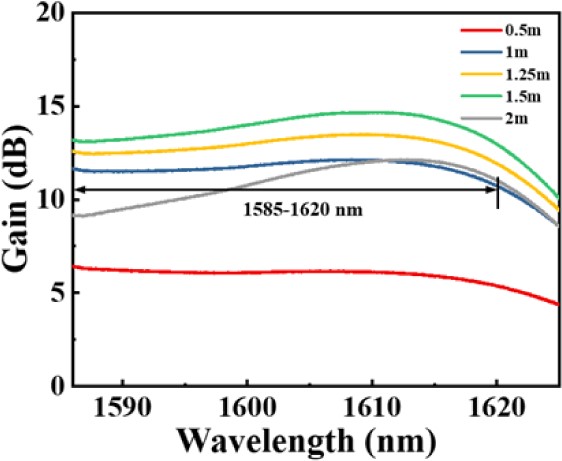
Silicate Fibers can Serve as L-band Fiber Amplifier
Most recently, a research team led by Shanghai Institute of Optics and Fine Mechanics, Chinese Academy of Sciences, has succeeded in enhancing the L-band emission cross section of Er3+ ions by manipulating the local structures around Er3+ ions in silicate fiber. The study was published in Optics Letters.
In their experiment, more than 1.2× 10–21 cm2 of emission cross section at 1625 nm has been achieved in self-developed Er doped silicate fiber. The gain coefficient at 1625 nm wavelength of Er-silicate fiber was increased to 4.7dB/m. The gain flatness in a 1-m silicate fiber was achieved to be 0.8dB.
Moreover, compared with Er-silica fiber, the studied Er-silicate fiber has much higher concentration of Er, shorter length of fiber and high gain coefficient and better gain flatness, indicating an excellent fiber host for L-band fiber amplifier.
This research leads to a host material for L-band EDFA.
This work was supported by National Natural Science Foundation of China.

L-band gain of Er silicate fiber.
Article website: